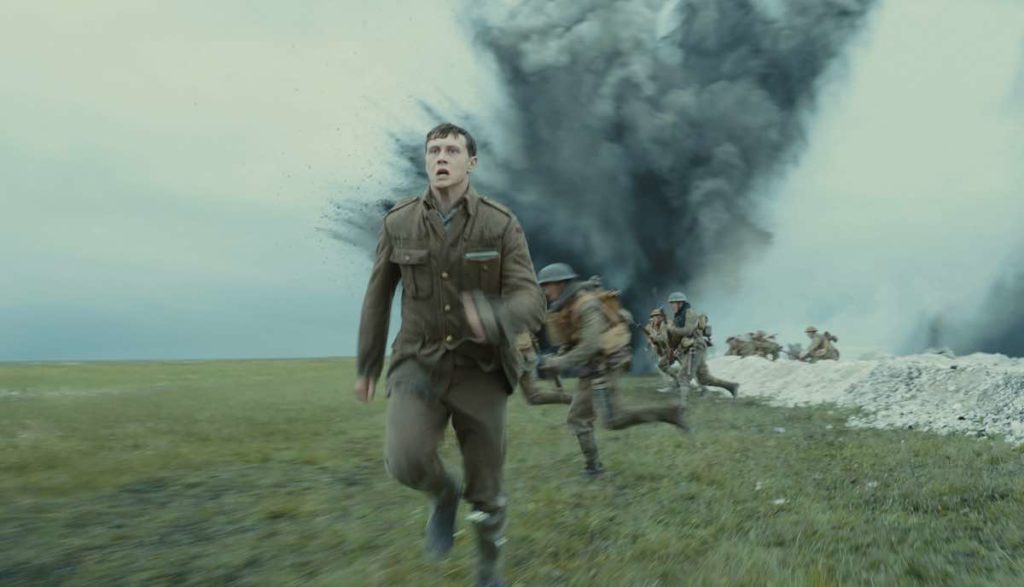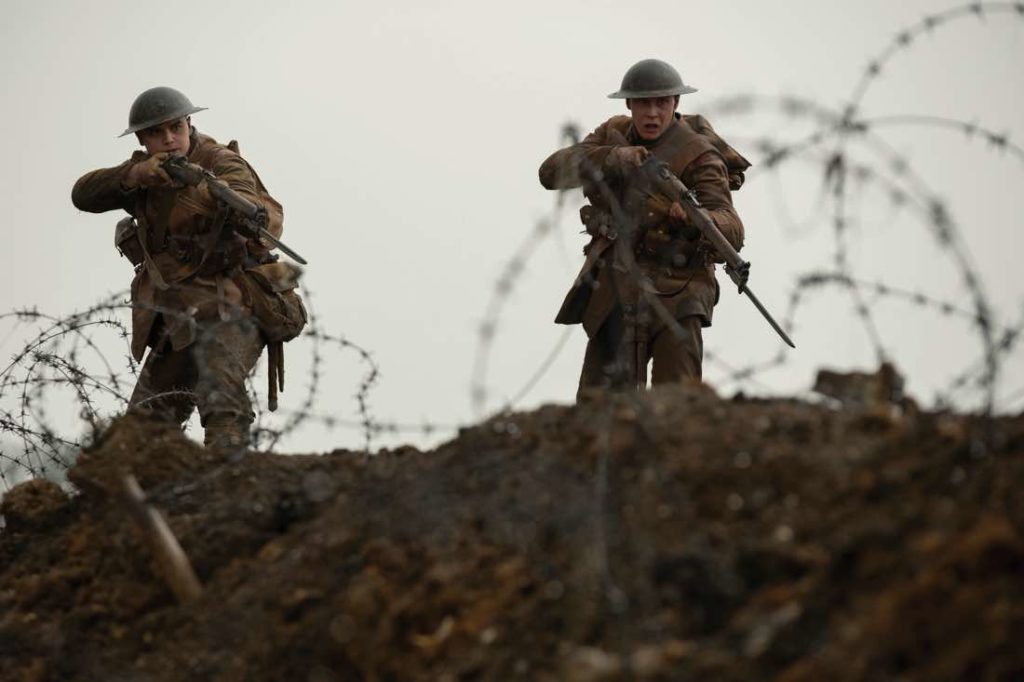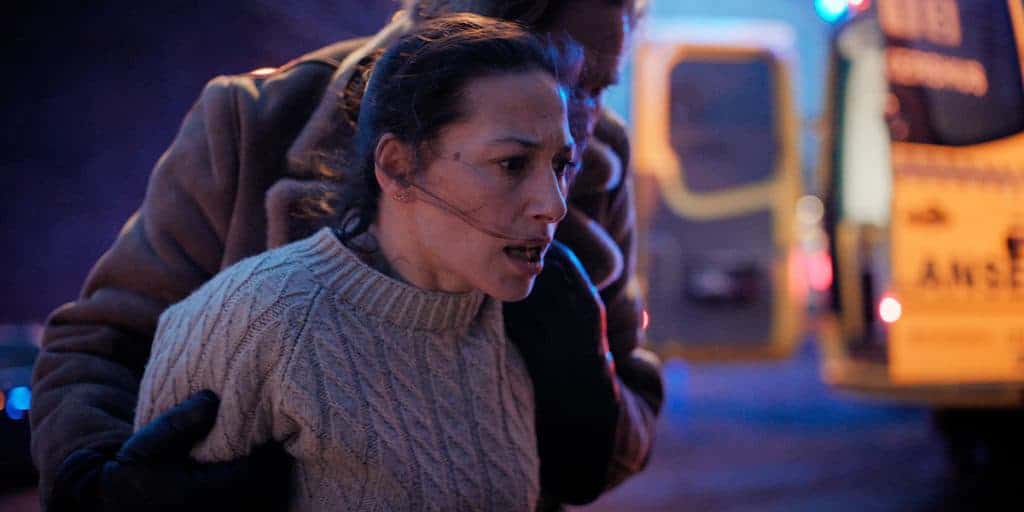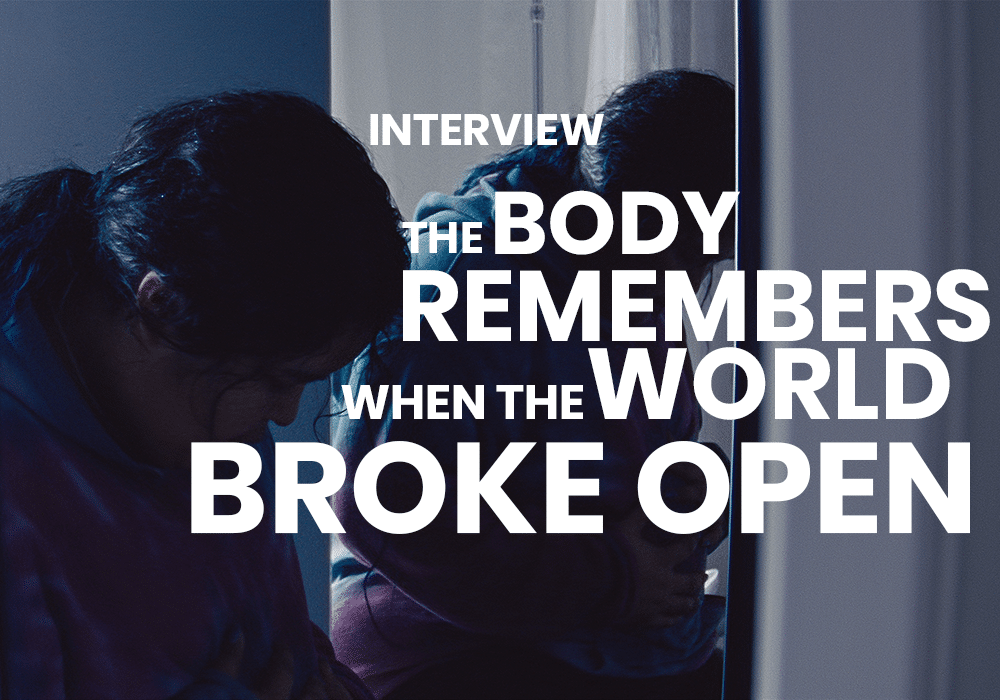A chamber drama tucked inside an exquisitely rendered war epic, Sam Mendes’s 1917 is a breathtaking thriller with perfect pacing.

A chamber drama tucked inside an exquisitely rendered war epic, 1917 is more heartstopping thriller than traditional war movie. In the wake of a strategic German retreat during World War I, two Lance Corporals — the wet-behind-the-ears Blake (Dean-Charles Chapman) and the more cautious, and experienced Schofield (George MacKay) — must deliver a message to the front line in the next few hours to prevent a massacre. The film unfolds in two hours of real time to keep us as tense as our heroes are. The real-time focus is heightened as the film is shot to look like one single, uninterrupted take: Blake and Schofield must keep moving forward, the pressure never letting up, and we stay with them all the way, never granted the reprieve of a cut.
Listen to our podcast about Sam Mendes’s war films, 1917 and Jarhead
Director Sam Mendes has commented that a film needs to breathe in and breathe out. That’s precisely what 1917 does, constantly building and releasing tension: by the speed of the actors’ movements and how the camera follows them, by withholding information from us in the same way it’s withheld from the characters, and by moving from quiet to loud, quiet to loud, with both sound and score helping to control the pace. This story of a fool’s errand and the friendship between the two men asked to carry it out is so tense that you don’t realise what an emotional toll it’s taken until the very end, when you and the characters can finally breathe, and it hits you like a ton of bricks. That is why 1917 strikes me as more akin to 2019’s Lean on Pete than to Christopher Nolan’s Dunkirk, to which it certainly still owes some debt despite surpassing it in every particular.

It’s hard to imagine 1917 being made by any other filmmaking team. Mendes’s storytelling requires incredible choreography — like a West End musical on steroids. He effortlessly conveys both the detritus and the action of war in the periphery of the frame, a necessary adjunct to understand the weight of our characters’ journey. But it still feels like a small, intimate film at its centre — a feat that could only be achieved by someone who reimagined a big musical like Cabaret for the intimate space of the 251-seat Donmar Warehouse Theatre. Maintaining the film’s impeccable pacing without visible cuts requires the theatre director’s skill to manage the pacing of an entire play throughout an evening. And yet to achieve all this without ever losing focus on the central characters would be unimaginable from a team that hadn’t made, say, a Bond movie, managing the technique behind big budget theatrics. Only cinematographer Roger Deakins could have balanced the sweep of the film while maintaining a laser focus on the characters: the blocking is designed around their emotional journey, and the camera breathes with them at every step.

Eschewing conventional exposition for in-the-moment intensity, we get to know Blake, Schofield, and those they meet along the way through how they react to each situation — and the way they don’t react to the dead bodies strewn across the ground everywhere they go. It’s the kind of film where a funny story shared between friends is as emotionally resonant as watching our hero run at right angles to the rest of a charging army, in one of the most awe-inspiring images of the year. It’s a film in which the haunting sounds of a single male voice singing in the distance can give you and the protagonist the hope and determination to keep going, that this impossible journey might not be for nought.



